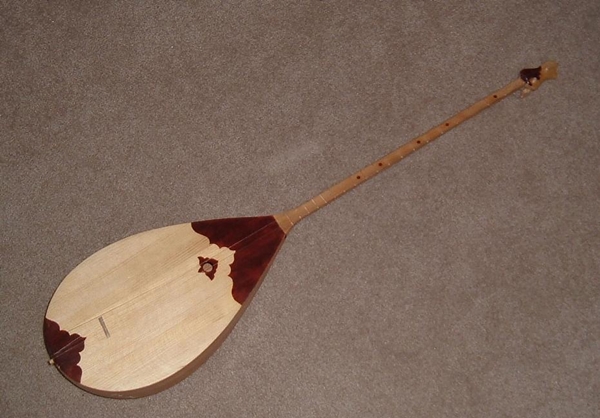The material and structure of Arcan Dombra
Akendumbra is an ancient Kazakh stringed musical instrument. Its type is relatively simple. Kazakhs have unique names for each part of the musical instrument, often named after human organs or common objects. It consists of the top (the Kazakhs call the face, the same below), the back (body), the stem (neck), the head (ears), the pegs (ears), the horses, the strings (the navel) and the strings. composition.

Arcan Dombra is 90 cm long. In addition to the top, the body of the piano is made of a whole piece of red willow or pine. Folk selection of materials is very particular. Red willow should be kept away from rivers and lakes, and pine should be grown on mountains. After the trees are selected, their bark should be stripped to make them dead standing trees. After three years, they will be cut down. Such wood will not be used in the future. Durable and not easy to crack.
When making, first use a curved axe to cut a piece of log out of the prototype of the piano body, and then use a curved knife to trim the back, stem, headstock and other parts of the piano to be smooth and clean, and the back plate of the speaker is 0.5 cm thick. The panels are mostly made of pine, preferably white pine or Tianshan spruce. In the past, the Kazakhs did not use woodworking tools such as hand saws and planes, and the panels were also cut with axes and machetes. The wood texture of the panels should be parallel to the strings, that is, vertical up and down, and the thickness of the board was 0.3 cm. For deformation, a pine sound beam (belt) is placed laterally on the back of the panel. The sound box is formed by nailing the panel around the belly of the piano with dowels. The resonance box is in the shape of a flat scoop, with a surface width of 15 cm. The headstock is flat, unadorned, and slightly wider than the stem. Two peg system, cylindrical, divided up and down horizontally or vertically on the headstock. Wooden mountain pass (neck horse). The smooth surface of the piano bar is the fretboard for pressing the strings, on which there are 8 gut string frets (keyboard), which can be moved to adjust the pitch. There is a wooden bridge in the center of the panel, and there are several small sound holes on the panel above the horse. Two gut strings are stretched, the upper ends are wrapped around the pegs, pass through the mountain pass and the horse, and the lower ends are tied to the binding strings. The Kazakhs can make their own intestine strings. First, soak the intestines in salt water, then remove and scrape the debris in the intestines. Then, the intestines are twisted thinly, formed into strings, taut, and dried.
In the 1950s, this traditional Acendumbra was continuously improved, the resonance box was enlarged, the surface was 18 cm wide, the small discs (buttons) that marked the sound position were added to the piano bar, and the strings were also The guts were changed to silk strings, and the number was increased to 14, and several small sound holes were changed to a large circular sound hole.
 渝公网安备 50010702504639号
渝公网安备 50010702504639号